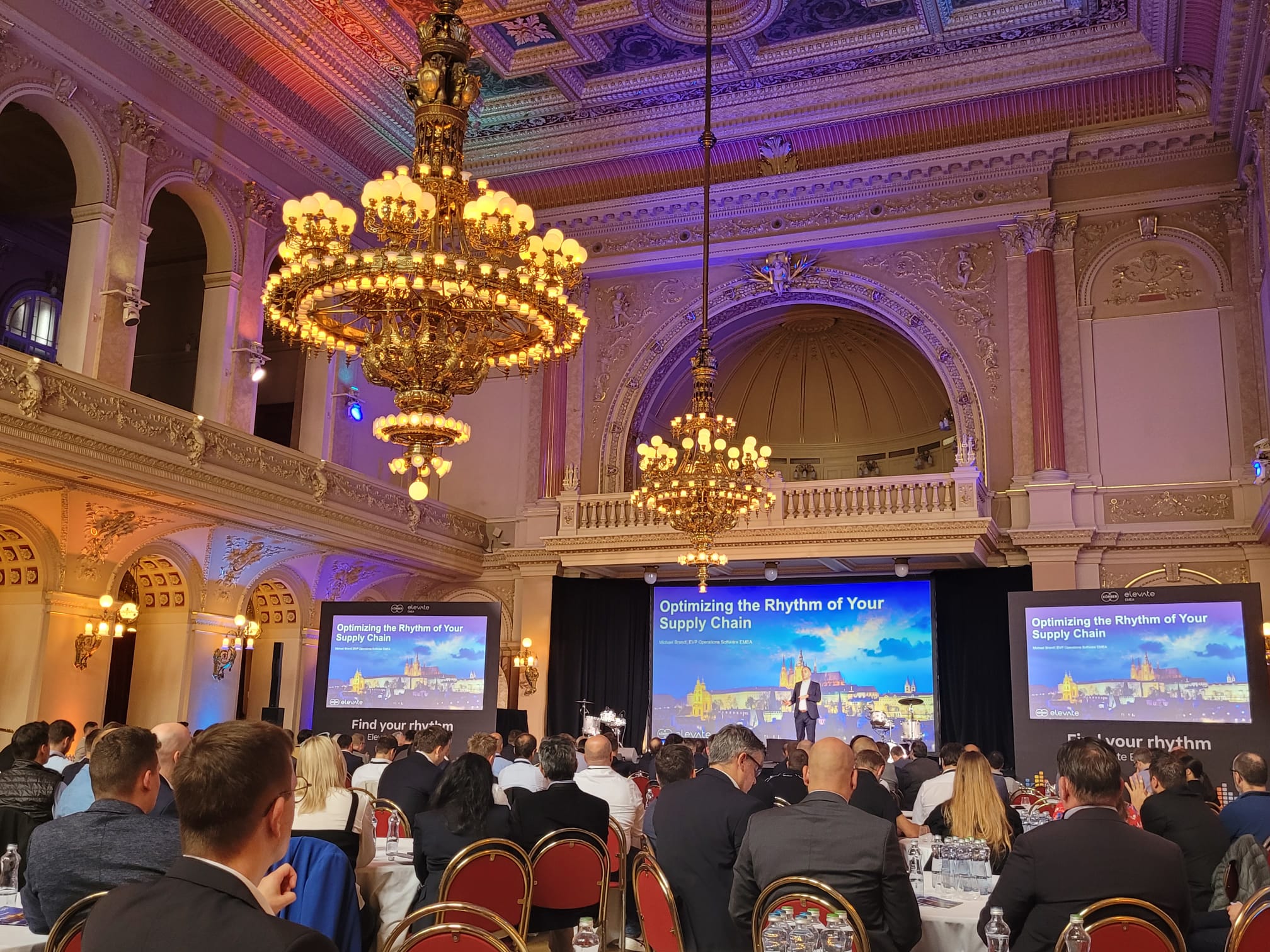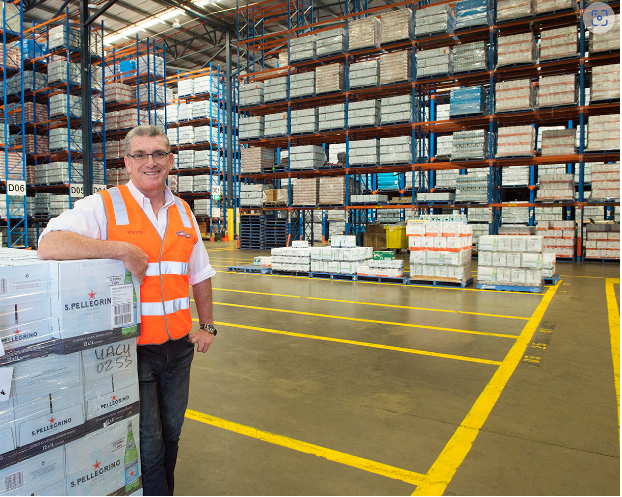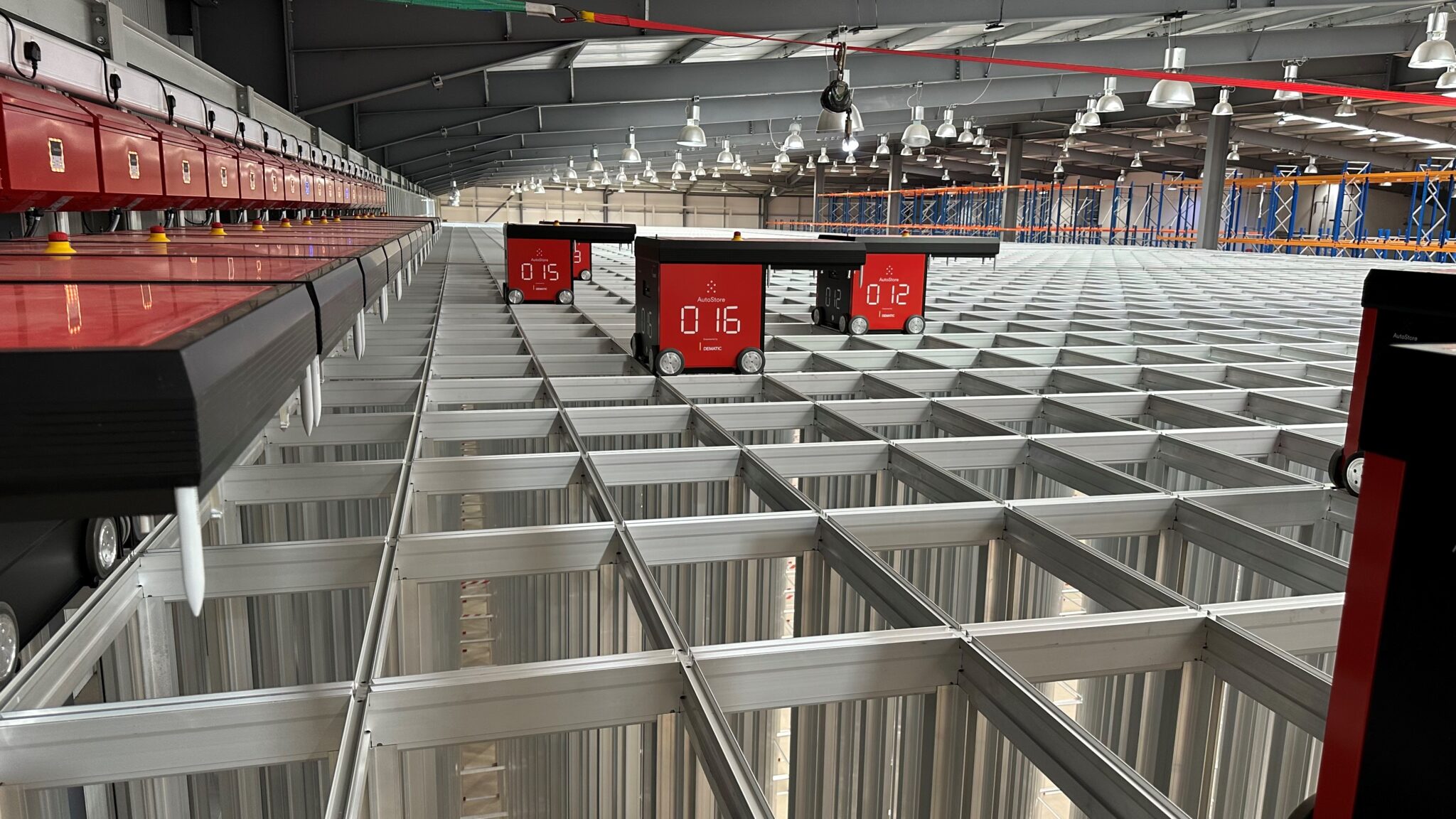Koerber Supply Chain’s ‘Elevate’ event in Prague was an opportunity to discover how software and technology address the unprecedented complexity in logistics. David Priestman reports.
End-to-end connectivity, digitization and visibility are the goals for many supply chain managers. Multinational corporations generally consider supply chains to be ‘mission critical’ nowadays. A supply chain is a collaborative function, but only as strong as its weakest link. While major suppliers like Koerber provide warehouse automation, warehouse management software (WMS), order management systems (OMS) and much more, however, it is estimated that one third of warehouses still operate manually.
Michael Brandl, Executive VP EMEA for Koerber Supply Chain, told the conference that the company’s objective is to become the global supply chain management (SCM) leader. Reporting a revenue increase of 27%, 117 new customers and a 20% rise in staff over the last year, he is bullish, unveiling two new product lines: Transport Spend Optimisation and OMS. Emphasizing the importance of adaptability, reliability, speed and cost in project management, he forecasts further growth in retail micro-fulfilment, challenges in recruiting and retaining warehouse workers and a need to improve environmental, social and governance (ESG) outcomes for customers. A ‘unified control system’ to orchestrate and optimise supply chain technology, IT and staff is Brandl’s vision.
More than a Game
“Koerber aim to help our customers keep their consumers happy and be repeat buyers,” Sean Elliott, EVP and Chief Technology Officer told me. “The line between success and failure is as thin as a cardboard box.”
One new concept is supply chain ‘gamification’. Koerber, together with Vaibe, provides a solution based on success psychology and reward recognition, comprising game-design elements in the workplace and incorporates rewards, challenges, leader-boards and feedback. “How do I make work a game?” Elliott said. “If people have fun they work harder. The more gamification there is in workers’ experience the more engaged the staff are.” This could reduce absenteeism and increase retention rates. It can be integrated into any application – such as in voice-directed technology, where staff much prefer to be hands-free and have less screen time.
“We are not a house of brands,” Anton Du Preez, EVP Sales EMEA stated. After a plethora of acquisitions, which might not be complete, including HighJump, Inconso, Voiteq, Cirrus, Aberle, Langhammer, Univeyor, Efacec and Siemens’ parcel conveyors, the Koerber name is the only one used, specifically Koerber Supply Chain. “We intend to be a supply chain champion globally,” he declared. The company is looking to extend its software offerings to include planning and more TMS (transport management). “We help move boxes, so planning and transport are key areas of interest to us,” Du Preez said.
Orchestration Conquers Complexity
Supply chains have become more complex in recent years and there are many ways in which that is being tackled: nearshoring, increasing inventory, ‘Just-in-case’ instead of JIT, better energy and natural resource management, optimising packaging use and structural changes to reduce the demand for labour.
“If you’re not investing in robots now you’re already behind the market,” Du Preez declared. Robots typically are replacing unavailable staff, he explained; the ones warehouses cannot find to hire, rather than existing staff. “Warehouse employees enjoy working with bots and automation improves safety,” he added. “There will be consolidation in AMRs and robots. While there’s a need for a variety of types of robot the advantage of the integrator is that they have all the capability and can choose the best subsystem technology, then orchestrate it.”
I asked Du Preez to comment on other key trends in automation. “How to go higher, more vertical is one. The space above 2m is under-used. We can solve this with our solution and robotics. Another issue is the friction between WMS and TMS. Which has priority when an order comes in?” Koerber is trying to find faster outcomes and responsiveness. The company’s IT solutions create demand for its automated materials handling products and vice-versa. “All large projects need software,” he told me, “we have the first referral for the automation.”
What about the notion of the ‘dark warehouse’? “It can work in specific use cases, but I’ve yet to see it going mainstream,” Du Preez responded. “It’s a niche. You run into the challenge of fixed automation and a long ROI. What if there are big changes necessary? You could have too rigid a solution. AMRs are more flexible. We can move the bots to a new site. Not having a ‘warehouse manager’ isn’t practical.”
Elliott added more detail to the concept of ‘orchestration’. “With AMR 1.0 most vendors have a variation in travel time. Orchestration is version 2.0 – dwell time is optimised. How does software make humans work better? What’s the waiting time? When does it make sense to use different brands? One AMR can be better for high SKU DCs, one for low. The integrator is neutral, so as to make the fleet better. Complex sites with multiple warehouse control systems (WCS) not communicating can be improved with one WCS from us. This provides visibility, for example if there’s a blockage we stop the next process.”
Tech Trends
Will conveyors continue to play a key role in warehousing? “The volumes to move around are huge, that would take a lot of robots to move it, especially for pallets and with the collision systems in place,” Du Preez explained. “Conveyors can have just inch gaps, rather than metres. They provide scalability and do the heavy moving. So conveyor usage will continue, but using fewer spurs to the aisles, where the AMRs are good. A ‘stabilisation of conveyance’ will happen. Table-top bots provide an alternative to some sortation and specialist sorters like tilt-tray and shoe-sorters are expensive and not so scalable.”
Koerber’s spokespeople expressed interest in new technologies such as gripper robotics and vision tech. AI, of course, is high on the agenda. It will be utilised in many forms and places. “We must give customers immediate value, for example by using AI for slotting (where to store each product), then expand it product-by-product,” Elliott told me. “Generative AI can query the WMS.”
“AMRs are in a ‘hype cycle’ right now,” Du Preez continued. Koerber have been integrating them for five years. They do what’s necessary, achieving throughput efficiency and we have high confidence in them. There has been a gold rush of entrants to the AMR market so we can evaluate the case studies. But it’s not a big value-add. They have been commoditised, software is more important. AMRs are never used in isolation. The DC is a flow, you have to take into account the whole solution. Dwell time is the key KPI.”
Cost per pick is the value proposition that Koerber are putting forward. “A Unified Control System (UCS) is critical,” Elliott concluded. “Technology solves each piece of the project, but that can lead to fragmentation without a UCS. Customers have the all-consuming job of running their facility. We need a healthy ecosystem of tech and the implementation.”











